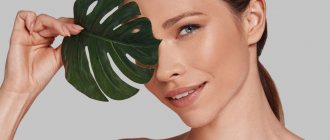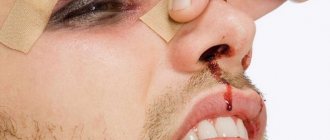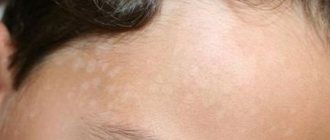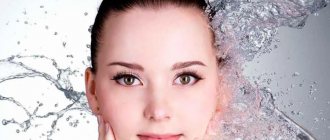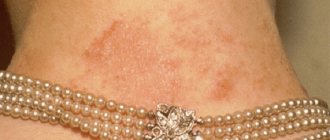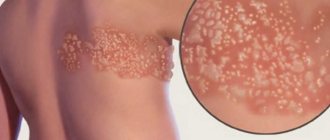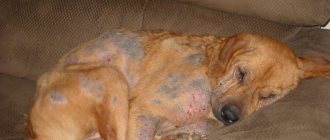2nd skin phototype and tanning in a solarium
And yet, with the right efforts, owners of the Nordic phototype can boast of a persistent golden skin color, and if you try, you can tan to bronze shades. However, a simple visit to the solarium on a sunny day is not enough - you will have to resort to special tanning cosmetics:
- Products without bronzer will help those who want to get a light tan, which will add spice and zest to the cold Nordic look. In addition, such creams will minimize the risk of burns and redness of the skin.
- Products with bronzer will speed up tanning and add intensity and richness to your skin color. In order to get a golden hue, you should choose a product with a low bronzer content, and for those who want to tan to light chocolate tones, more concentrated creams are suitable.
- It is not recommended for people of the Nordic phototype to use products with Tingle and Body Blush effects, however, if your skin is already quite tanned, you can try using creams with Body Blush or with a low content of the tingle component (for example, Center Stage cream). If there are no signs of skin irritation, you can continue sunbathing with these creams.
VI phototype
Names: African American, African.
Skin: dark brown or blue-black. The phototype is characteristic of people from the African continent and the aborigines of Australia.
Eyes: dark brown or black.
Reaction to ultraviolet radiation: natural skin protection from UV exposure can be considered ideal, since it allows you to constantly be exposed to direct rays of the sun without any damage; Photoburns never happen.
Recommendations: use nourishing and moisturizing agents if necessary. Artificial photoprotection is not required. It is necessary to evaluate contraindications when using most types of peeling and hair removal (there is a high risk of hyperpigmentation).
Celebrities: Naomi Campbell, Tina Turner, Whoopi Goldberg.
Skin phototypes should be taken into account when choosing an adequate and safe tanning regimen, purchasing photoprotective products and undergoing certain cosmetic procedures. This will prevent burns, preserve beauty and protect health.
In 1975, Dr. Thomas Fitzpatrick developed a system that measures how a patient's skin reacts to ultraviolet radiation. Today, this system is known as the Fitzpatrick scale, and dermatologists and estheticians around the world use it to determine the required level of exposure when choosing procedures such as chemical peels and laser treatments. In this article, experts talk about how different skin phototypes react to excessive exposure to solar radiation and what methods provide effective and safe treatment for pigmentation for a particular skin phototype according to Fitzpatrick.
2nd skin phototype and sun tanning
People of Nordic appearance burn in the sun easily and quickly, so you cannot do without special means of protection against excess ultraviolet radiation. Follow these simple rules:
- In the first days of tanning, use sunscreen cosmetics with an SPF factor of 30 to 50. Such creams will save you from the risk of burns and redness - protective filters protect especially sensitive areas of the skin.
- When the skin adapts and gets a noticeable tan, you can switch to products with a minimum SPF content (from 6 to 15).
- In the later stages, when the skin is already well prepared, you have received a noticeable tan and are not burned - you can afford to use active tanning products that do not contain SPF filters or with a low content (up to SPF-6).
To increase the lifespan of your tan, you need to properly care for your skin after sunbathing. The first thing you need is a moisturizer to fix the tan and restore the skin. Depending on the desired result, you can choose a balm, lotion or milk with or without bronzer. In addition, for washing and scrubbing it is also better to use special products for tanned skin - this will keep the tan uniform, rich and deep.
III phototype
Titles:
Central European, dark European, mixed, dark-skinned European.
Leather:
slightly dark, with an olive tint or ivory color, practically without freckles.
Hair:
shades of chestnut, dark brown, rarely black.
Eyes:
gray, brown.
Reaction to ultraviolet light:
The tan applies easily and quickly, producing a moderately dark shade. However, burns may occur with excessive initial exposure to the sun (more than half an hour).
Recommendations:
rational insolation regime, especially with a sharp movement to southern latitudes.
Phototypes in cosmetology
In addition to the features of care and sun protection, phototypes are taken into account when using a variety of light cosmetology techniques, primarily laser. The action of pulsed light with a certain wavelength, that is, a laser, is used by cosmetologists for cleansing, lifting, hair removal and other purposes. Before using such techniques, the cosmetologist must take into account the skin phototype.
p, blockquote 35,0,0,0,0 —>
Incorrectly selected laser beam power can lead to burns.
How to determine the skin phototype for laser hair removal?
p, blockquote 36,0,0,0,0 —>
To do this, you need to use the Fitzpatrick tables given above. However, this technique does not always give an accurate result, since the points scored may fall on the border of phototypes, or the characteristics of the skin will be determined incorrectly. Therefore, when working on open areas, a preliminary test is used, irradiating a limited area of the epidermis with a laser at the intended site of exposure.
p, blockquote 37,0,0,0,0 —>
The result is assessed after a week for people of phototypes 1-3, after 2 weeks for people of the 4th and after 21 days for people of the 5th and 6th. This allows the doctor to confidently select the safe power of the laser beam for hair removal or other procedures.
p, blockquote 38,0,0,0,0 —>
Features of visiting a solarium and some cosmetic procedures:
p, blockquote 39,0,0,0,0 —>
With phototype 1, a minimum radiation power is required, since such skin is prone to burns. Visiting the solarium is not recommended. With phototype 2, the radiation power is selected individually. Sunbathing in a solarium is also not recommended, but if such a procedure is carried out, the insolation time should not exceed 15 minutes a day with a break of 2 days. 3rd phototype: the duration of sessions should not exceed 25 minutes; the break between them is at least a day. 4th phototype: permissible time - half an hour a day, daily or with an interval of 1 day. 5th phototype: usually a tan forms naturally, without visiting a solarium
However, when carrying out peeling, including laser, you need to be careful. Pigment spots form on such skin quite easily. 6th phototype: the basis of care is moisturizing and cleansing; when performing laser procedures, there is a high risk of pigmentation disorders.
p, blockquote 40,0,0,0,0 —>
To prevent laser radiation from triggering the uncontrolled formation of melanin under the influence of street sunlight, it is better to plan such procedures in winter. In the next 2 - 3 months, you should protect yourself from ultraviolet radiation with special means and not sunbathe.
p, blockquote 41,0,0,0,0 —> p, blockquote 42,0,0,0,1 —>
«>
Local history. Abstracts. Tourism
Red-haired people with milky-white skin and hemp have always attracted increased attention from others. Although cosmetologists call this type of skin Celtic, even in Scotland and Ireland, countries, redheads are by no means the majority. Well, the most important thing is that there are quite a lot of redheads both in the Caucasus and in the Crimea, and among peoples who do not consider themselves European. The legendary Mongol commanders, Genghis Khan and Tamerlane, were red-haired and blue-eyed. Hair type in modern forensics and genealogical research is considered the basis for accurate examinations using a microscope and computer programs. If in cosmetology there are only 4 main types of skin, then in the study of keratinocytes (scales) of hair, several hundred “centers of origin” of different hair types have been identified. For example, light brown, straight, thin hair in Southern Poland is considered the Slavic type, and light brown, thick curly hair is considered Iranian. Thus, all redheads - both among the Irish, and among the Ossetians, and among the Kazan Tatars, and among the Crimeans - are to some extent related to each other! And if you think about the fact that the basis of the spiritual culture of the Celts is the Druid priests, who in ancient times knew how to build huge stone structures for magical purposes, then such structures (megaliths) are located wherever red-haired people now live - from the Pacific Ocean to the Atlantic .
But the geographical (almost geometric) center of redheads still turns out to be somewhere in the Southern Urals... However, we offer a small selection of materials to begin with, and then we will expand and discuss them.
Doctors have identified six different skin types, of which four types are characteristic of the majority of the European population. These differences are mainly due to hereditary factors.
Type 1 ( Celtic ) Approximately 2% of the population of Central Europe belongs to this group. It is characterized by: very light, pinkish-white skin, many freckles, blond or reddish hair, blue, light gray, light green eyes, the “Celts” have practically no pigment, which is why they have a high tendency to sunny burns, they immediately burn, signs of photo-dermatitis appear on the skin: redness, peeling, itching, which is soon replaced by pain. With a severe burn, there are also blisters.
Type 2 (fair-skinned European) Approximately 12% of Central Europeans belong to this category. He is characterized by: fair skin, rare freckles, blue, gray, green eyes. Hair color - from light blond to light brown. People of this type also tan quite poorly and get sunburned easily.
Type 3 (dark-skinned, European) This includes 78% of the population of Central Europe. Differs in darkish skin, absence of freckles. Hair color ranges from dark blond to brown, eyes are light brown. They tan well; burns are possible with prolonged exposure.
Type 4 (Mediterranean) Approximately 8% of Central Europeans belong to this category. They have a fairly dark skin tone, dark hair and eyes. These people have virtually no tendency to get sunburn. Tanning occurs quickly and lasts a long time.
We find the first mention of red-haired people with blue eyes in Herodotus (5th century BC): ... Beyond the Tanais River are no longer Scythian lands, but the first land holdings there belong to the Sauromatians. The Sauromatians occupy a strip of land to the north, starting from the depression of Lake Maeotia, fifteen days' journey, where there are neither wild nor planted trees. Above them live, owning a second plot, the Budins. The land here is covered with dense forest of various types. 108 Budins are a large and numerous tribe; They all have light blue eyes and red hair. In their land there is a wooden city called Gelon. Each side of the city wall is 30 stadia long. The city wall is high and all made of wood. Houses and sanctuaries are also built from wood. For there are sanctuaries of the Hellenic gods with statues, altars and temple buildings of wood, built according to the Hellenic model. Every three years the Budins celebrate a festival in honor of Dionysus and go into a bacchanalian frenzy. The inhabitants of Gelon were Hellenes from ancient times. After being expelled from trading settlements, they settled among the Budins. They speak partly in Scythian, and partly in Hellenic. However, the Budins have a different language than the Gelons, and their way of life is also different. 109 Budins are the indigenous inhabitants of the country - nomads. This is the only people in this country that eats pine cones. The Gelons, on the contrary, engage in agriculture, gardening and eat bread. In appearance and skin color, they are not at all similar to Budins. However, the Hellenes and Budins are called Gelons, although incorrectly. Their entire land is covered with dense forests of various types. Among the forest thicket there is a huge lake surrounded by swamps and reed thickets. Otters, beavers and other animals with a quadrangular muzzle are caught in this lake. The boudins line their fur coats with the fur of these animals, and the testicles of beavers are used as a remedy against diseases of the uterus. Herodotus. Story. IV
Red-haired, red-haired, freckled... What is the difference and why do they call you names? Valentina Ponomareva
I am Russian, I am blond, I am red, I was born and raised under the sun. Not at night. Do not believe? Look into the wave of golden hair. Konstantin Balmont
There are very few red-haired people on the planet. According to various statistics, they make up from one to three percent of the world's population. But their unique color brightness has always attracted others, which has not always had good consequences for redheads. In Ancient Egypt they were sacrificed to the sun god Amun-Ra. The folklore of different nations reflected the fear of the “red-haired person” in proverbs, sayings and common sayings.
Who hasn’t heard at least once in their life the exclamation: “Am I a redhead, or what?” In Rus' they said: “Red is shameless; red and red - a dangerous person; Don’t go into the forest with a black guy, don’t make friends with a red guy; red-haired and bald - people are arrogant; stubborn, like a red-haired Zyryan.” Ossetians declared: “Whoever is frightened by a red-haired woman will buy a red cow in passing.” The Persians claimed: “His beard is red - this is another proof.” The only thing that stands out from this series is the Chinese proverb: “If you beat a black cow, you frighten a red one.”
In the medieval era, known for widespread witch hunts, a red-haired woman could easily be accused of being related to the devil. True, in the 19th century, attitudes towards people, especially women with fiery hairstyles, began to change, and in the 20th this process began to grow with increasing speed and force. It turns out that they need to be protected. So, at least, say researchers studying the phenomenon of redheads.
When scientists established that the age of the gene responsible for this unique color of human hair ranges from 50 to 100 thousand years, they were quite surprised. Then it was proven in the laboratory that red-haired people are more sensitive to pain. True, a partial refutation immediately followed: as if women of this type, on the contrary, were less susceptible to her. Well, let the professionals sort this out.
A number of studies have suggested that redheads are more susceptible to skin cancer compared to brunettes. But at the same time, some experts say that men in medical clinics recover fastest if they are cared for by red-haired nurses.
At the end of the last century, more precisely, in 1983, Californian Stephen Douglas founded the International Union of Redheads. The mouthpiece of this organization, The Redhaired magazine promotes a significant contribution to the development of the civilization of red-haired people, in particular, describing the life of the Norwegian Viking Eric the Red, Emperor Nero, Galileo Galilei, Christopher Columbus, Frederick Barbarossa, Cromwell, William the Conqueror, Antonio Vivaldi, Leonardo da Vinci, Vincent Van Gogh, Friedrich Schiller, Sarah Bernhardt, George Washington and many others.
Red-haired earthlings are distributed very unevenly around the world. There are regions with greater representation and vice versa – even to the point of complete absence. It is believed, for example, that most of them are in Ireland and Scotland (up to 11% of the total population), in Scandinavia - up to 5%, while in Southern Europe - less than 1%. There are said to be more than 12 million redheads living in the United States.
In Russia, the most “fruitful” place in this sense is called the Udmurt Republic (which actually claims to be the world leader in this matter). There, in recent years, the tradition of holding “Red Festivals” has arisen. During the holiday, the reddest families, the reddest beards, the reddest beauties and children are chosen. Red wigs and hair coloring products in matching tones are also on sale.
In addition, a VIP club of influential people with sunny hair has been organized in Udmurtia, and scientists of the republic are intensively researching the reasons for the high index of “redness” in the region. Some of them believe that the current Udmurts are descendants of the mysterious Budin people, whom Herodotus described as a nomadic tribe of people with blue eyes and red hair, living between the Volga and Kama rivers.
There are even suggestions that Izhevsk land is the homeland of all redheads, including the Celts. True, supporters of this point of view have opponents who ask the question: “Why weren’t the Cumans the ancestors? They, too, were a red-haired tribe.” Who knows, who knows... Even if this is important for science, the most important thing is to see a person as a person, and not treat him on the principle of similarity or difference in external data.
Published on 01/02/2010 in the section “The World Around Us”
Determination of phototypes
In everyday life, this is necessary primarily for the correct choice of sunscreens.
How to find out your skin phototype? To do this, you can use the tables below. They take into account 3 main factors:
- genetically determined external signs;
- sensitivity to sun exposure;
- features of tanning.
So, you need to determine the appropriate characteristics from the tables, write down and add up the points corresponding to them, and then compare the result with the final table.
Answer these 7 questions and accurately determine the PHOTO type of your skin
Share on Facebook VKontakte Twitter Odnoklassniki
Ultraviolet radiation can be very harmful to the skin, as it contributes to the development of premature aging, melanoma and other types of skin cancer, writes wikr.com
A skin phototype is a group of physical or racial characteristics that determines whether facial skin burns, tans, or “reddens” when exposed to sunlight. Once you determine it, you can choose the best sun protection for your skin.
With this test, you will find out what skin phototype you have and what measures you should take to protect yourself from the sun's rays (you will need a pen and paper).
How to take the test:
Each answer has a score on the left. Choose only one answer for each question and add up the scores for each of the 7 questions to get a total score. Check the results below.
What is your natural hair color?
- Red hair, light brown – 0
- Blonde, light brown – 2
- Brown - 4
- Dark brown - 8
- Dark brown-black – 12
- Black - 14
What is your Eye Color?
- Pale shade of blue, green, or gray - 0
- Blue, green or gray - 2
- Gray, light brown – 4
- Browns - 8
- Dark brown - 12
- Black - 14
Which item best describes your genetic inheritance?
- Caucasian with very white skin - 0
- Caucasian with light skin - 2
- Caucasian with olive skin (Mediterranean) – 4
- Middle East, South Asia, Asia, Latin America - 8
- Aboriginal, African, African-American – 12
